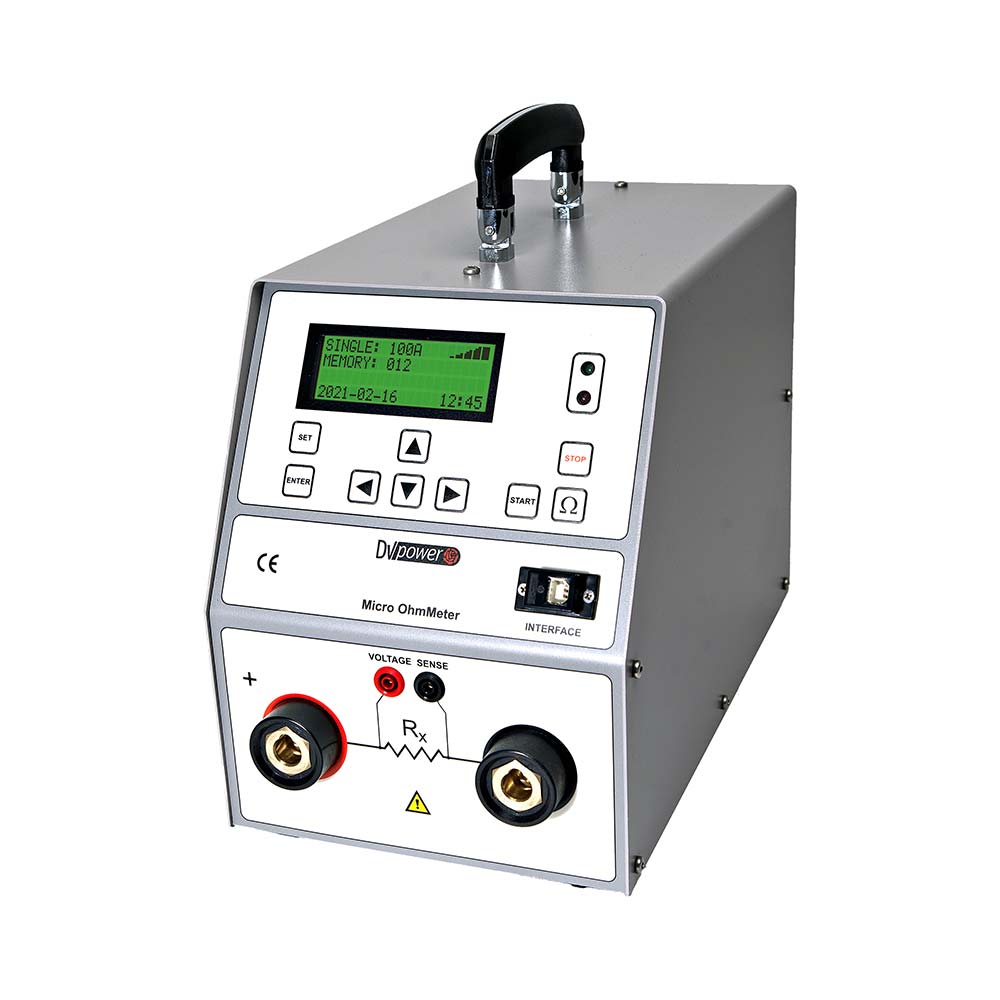Microhmmeters
Contact resistance measurement :
Mechanical wear and heat on circuit breaker contacts reduces the area of contact surface.
Due to arcing, carbonized layers are built on the contact surface. This also reduces a live contact area.
Reduced contact surface leads to increased contact resistance
R = r*l =ρ / S * l
Increased contact resistance leads to increased heating and losses.
| Current | Contact resistance | Power loss |
| 10 kA | 1 mΩ | 100 KW |
| 1 kA | 10 mΩ | 10 KW |
| 10 kA | 1 mΩ | 1 Kw |
| 1 kA | 10 mΩ | 100 W |
At 10 kA a contact with the resistance 0.1 mΩ gives a power loss of 10 kW. This power loss in one single point will definitely confer a temperature rise, which may result in overheating and possibly premature failure.
A strict reading of Ohm’s Law does not indicate the need for the high current
Standards proscribe the following:
IEC56 (IEC62271-100) : 50 A ≤I
ANSI C 37.09 : 100 A ≤I
The higher the current the better accuracy
Pollution of the contact surface
Kelvin’s (4-wire) method

IEC 61227-1 standard recommends use of higher currents in case of increased contacts resistance (more than 100 A).
Very high output voltage enables:
Use of thinner / longer cables
Wider range at high currents
Both Sides Grounded feature
Why?
- Safety reasons
How?
- Using current clamps
Optimal measurement parameters:
Accuracy: ±(0,1% rdg±0,1% FS)
Best resolution: 0,01 µΩ
Measuring with use of short cables
- How?
- Directly from the crane basket
Measuring with use of long cables
- How?
Traditional measurement method (from the ground)
Measuring with use Kelvin’s probes
- How?
Specially designed Kelvin’s probes with trigger button for starting test
Amperis products measuring low resistances (Microhmmeters). The equipment detects low resistances in order to verify safety and reliability in electrical networks. All our products are very accurate and of excellent quality.


